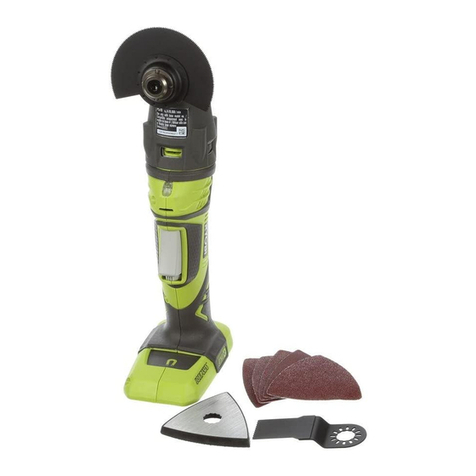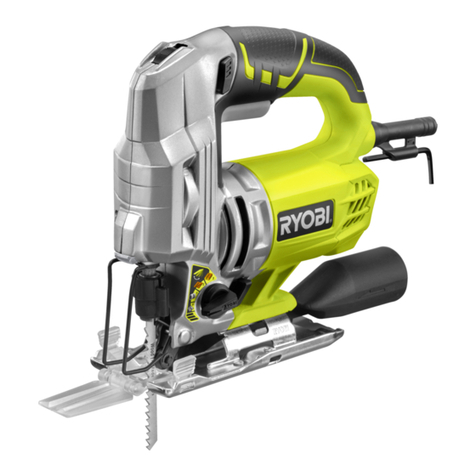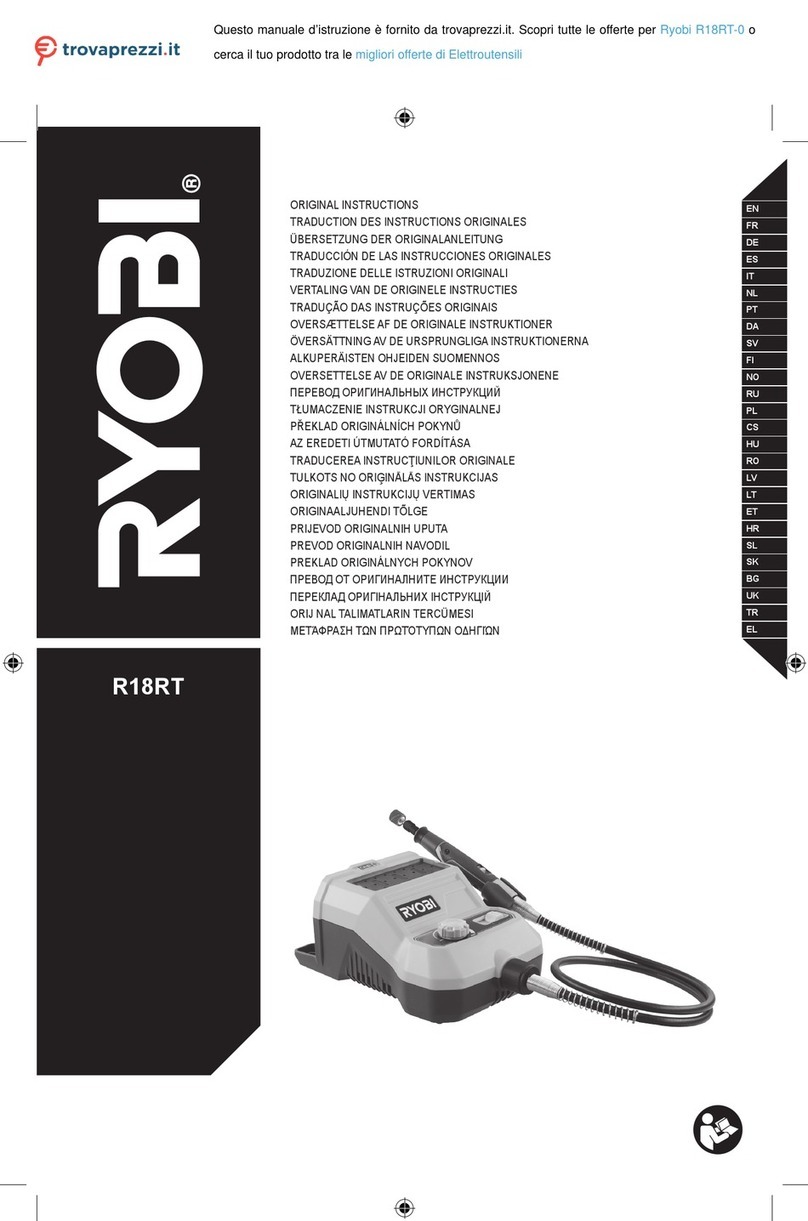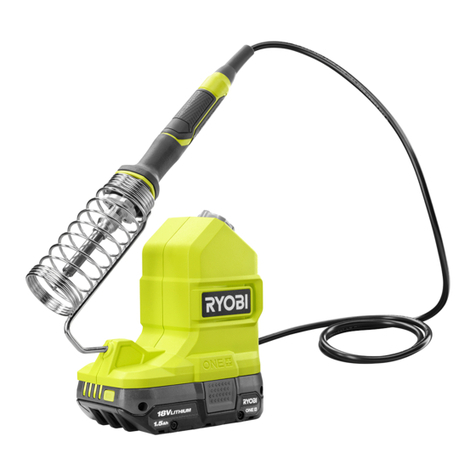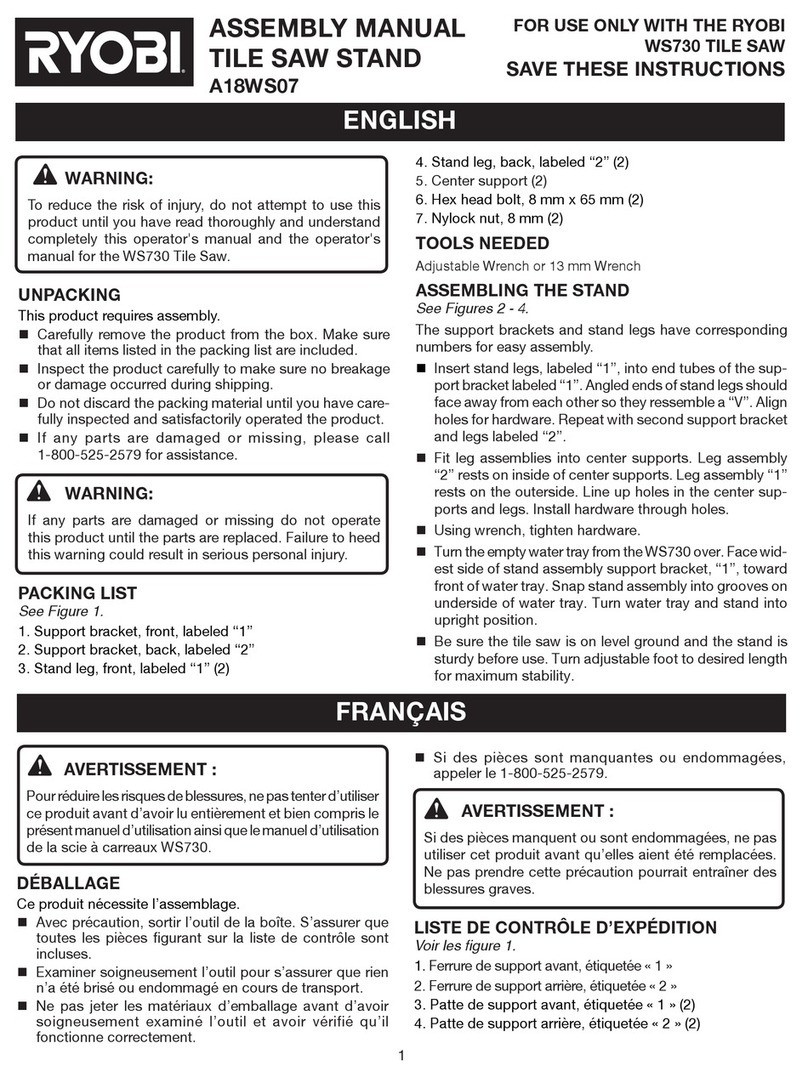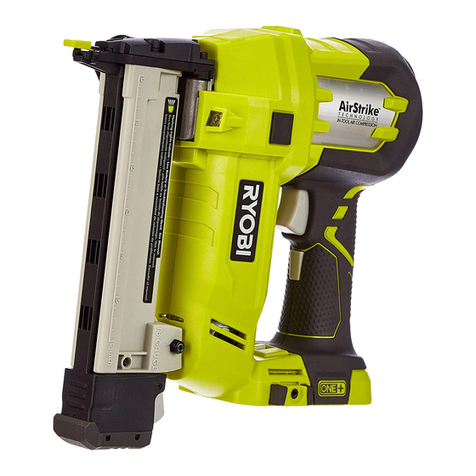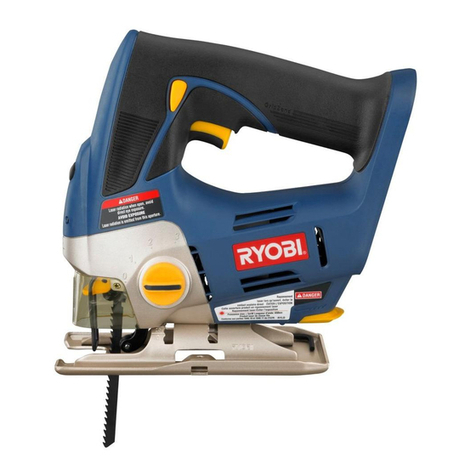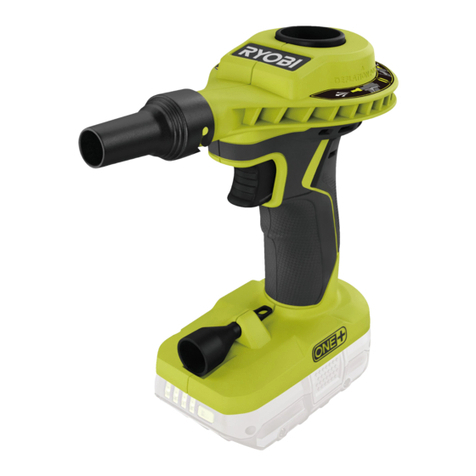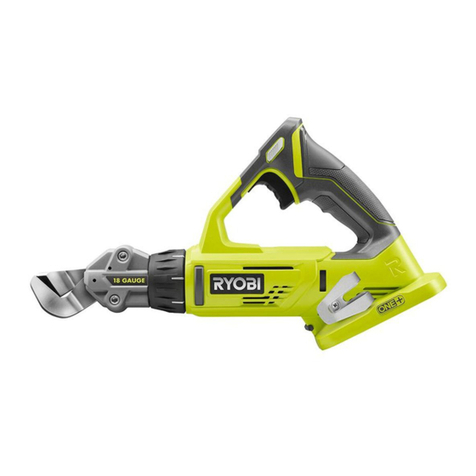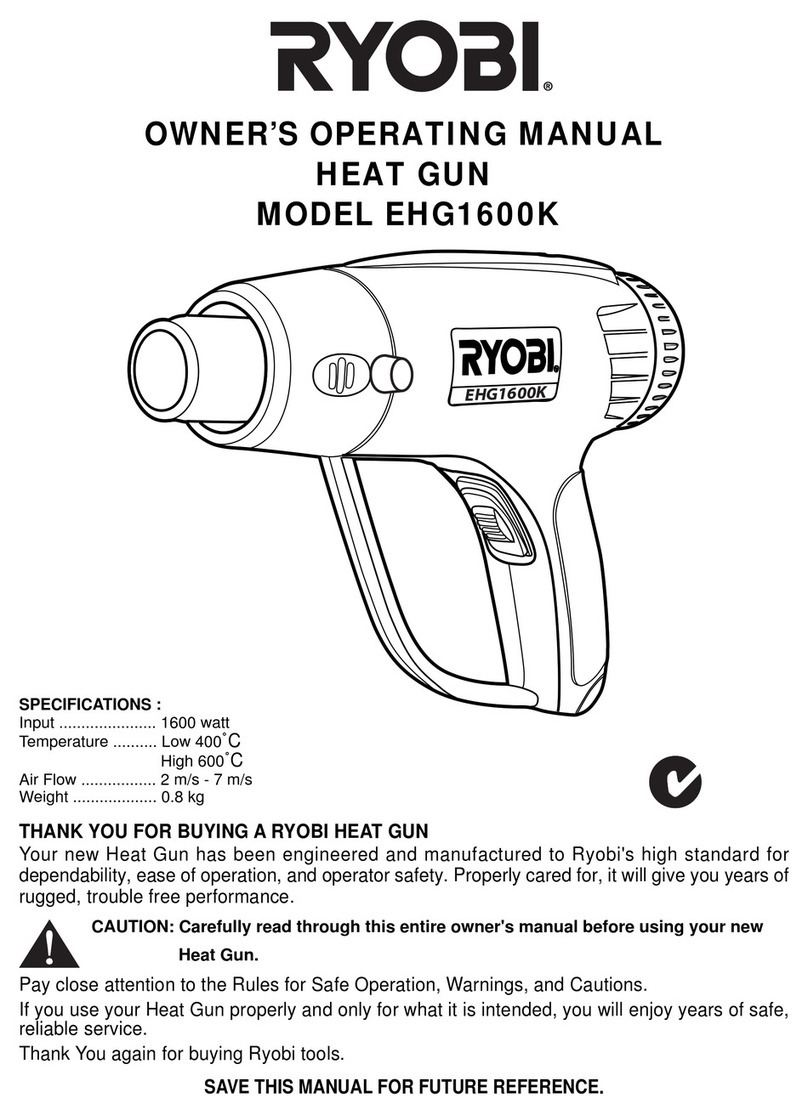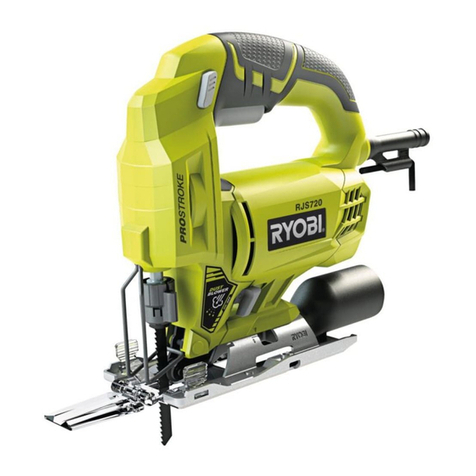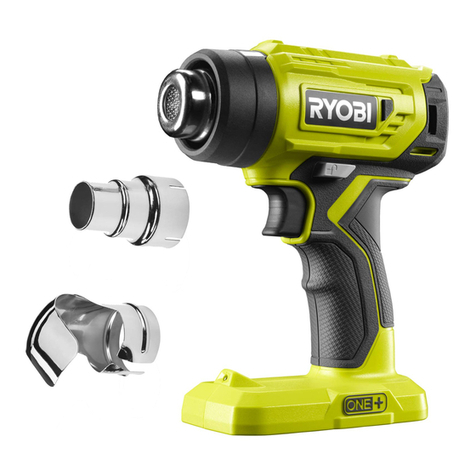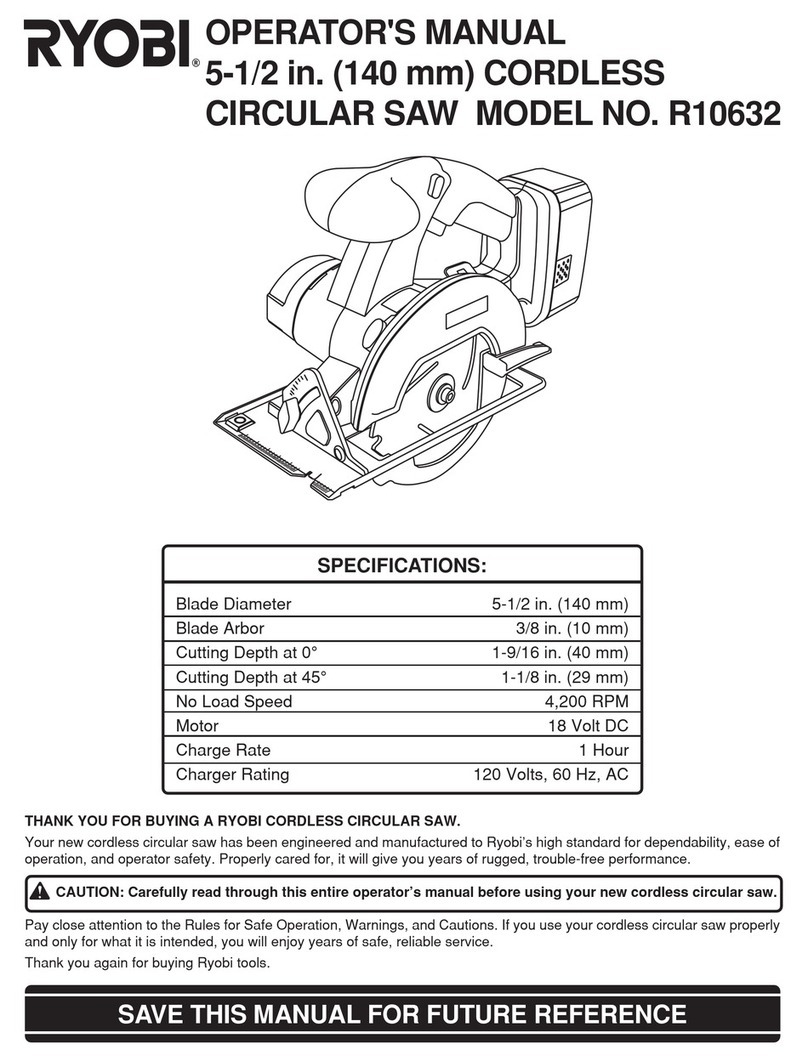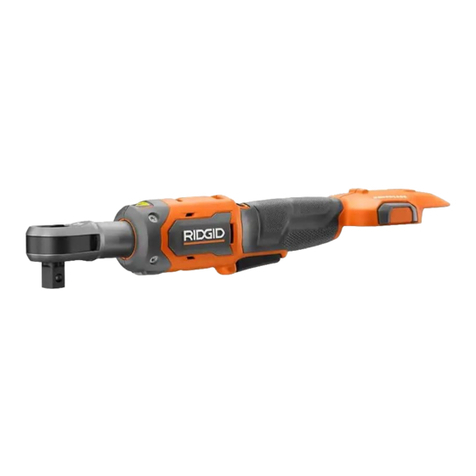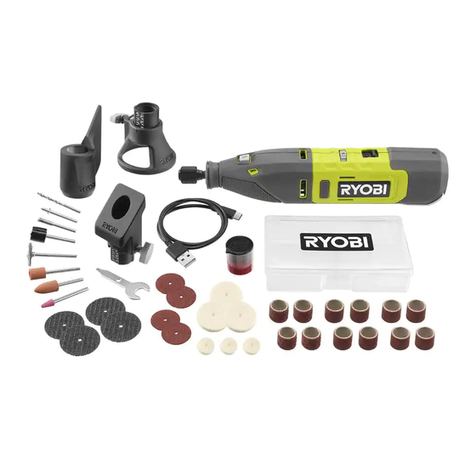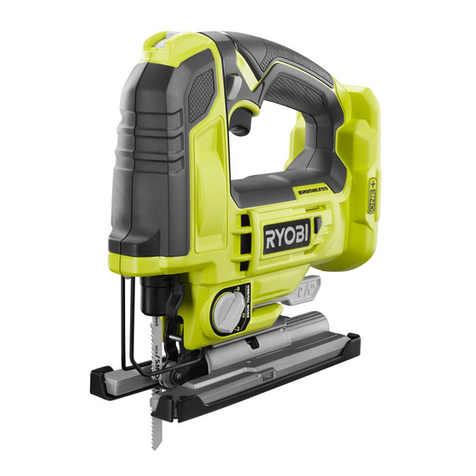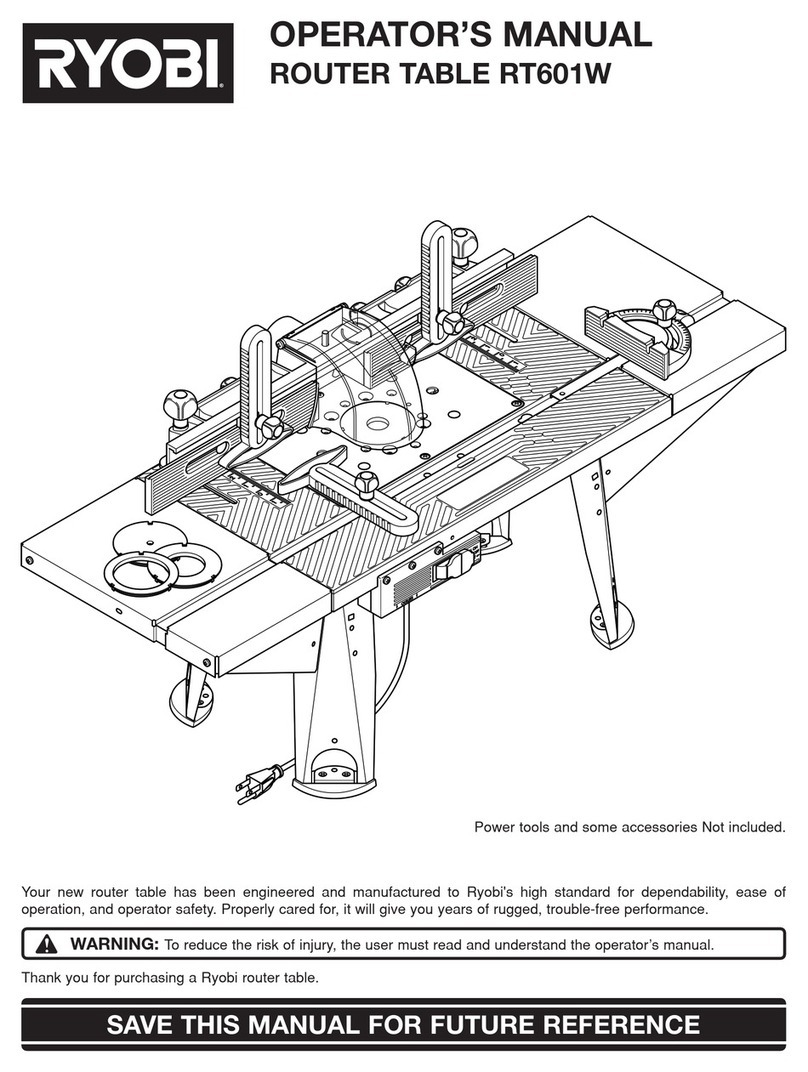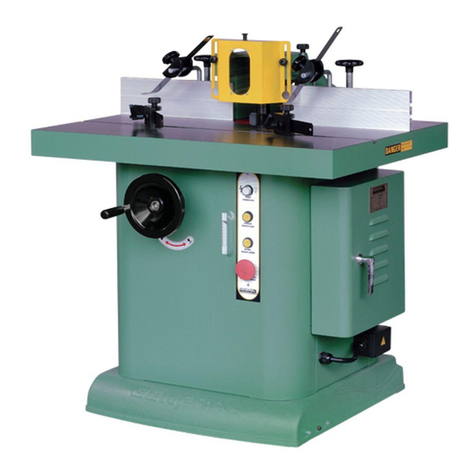
Safety
7
safety masks for use over eyeglasses or standard
safety glasses that provide protection against flying
particles both from the front and side. Always use eye
protection which is marked to comply with ANSI Z87.1.
■Additional safety protection will be required in
some environments. For example, the working area
may include exposure to noise level which can lead to
hearing damage. The employer and user must ensure
that any necessary hearing protection is provided and
used by the operator and others in the work area. Some
environments will require the use of head protection
equipment. When required, the employer and user
must ensure that head protection conforming to ANSI
Z89.1-1997 is used.
■Keep fingers away from trigger when not driving
fasteners to avoid accidental firing.
■Use safety equipment. Always wear eye protection.
Dust masks, nonskid safety shoes, hard hats, or hearing
protection must be used for appropriate conditions.
■Protect your lungs. Wear a face or dust mask if the
operation is dusty. Following this rule will reduce the
risk of serious personal injury.
■Protect your hearing. Wear hearing protection
during extended periods of operation. Following this
rule will reduce the risk of serious personal injury.
■Battery tools do not have to be plugged into an
electrical outlet; therefore, they are always in
operating condition. Be aware of possible hazards
when not using your battery tool or when changing
accessories. Following this rule will reduce the risk of
electric shock, fire, or serious personal injury.
■Do not place battery tools or their batteries near fire
or heat. This will reduce the risk of explosion and injury.
■Use the tool only for its intended use. Do not
discharge fasteners into open air.
■Use the tool only for the purpose for which it was
designed.
■Use only the staples recommended for this tool.
Use of the wrong staples could result in poor staple
feeding, jammed staples, and staples leaving the tool at
erratic angles. If staples are not feeding smoothly and
properly, discontinue their use immediately. Jammed
and improperly fed staples could result in serious
personal injury.
■Never use this tool in a manner that could cause
a staple to be directed toward anything other than
the workpiece.
■Do not use the tool as a hammer.
■Always carry the tool by the handle.
■Do not alter or modify this tool from the original
design or function without approval from the
manufacturer.
■Always be aware that misuse and improper
handling of this tool can cause injury to yourself
and others.
■Never clamp or tape the trigger or workpiece
contact in an actuated position.
■Never leave tool unattended if the battery is
installed.
■Do not operate this tool if it does not contain a
legible warning label.
■Keep the tool and its handle dry, clean and free
from oil and grease. Always use a clean cloth when
cleaning. Never use brake fluids, gasoline, petroleum-
based products, or any strong solvents to clean your
tool. Following this rule will reduce the risk of loss of
control and deterioration of the enclosure plastic.
OPERATION
■Do not use tool if trigger does not actuate properly.
Any tool that cannot be controlled with the trigger is
dangerous and must be repaired.
■Check operation of the workpiece contact
mechanism frequently. Do not use the tool if the
workpiece contact mechanism is not working correctly
as accidental driving of a staple may result. Do not
interfere with the proper operation of the workpiece
contact mechanism.
■Do not use a tool that does not work correctly.
■Always assume that the tool contains staples.
■Do not carry the tool from place to place holding the
trigger. Accidental discharge could result.
■Always handle the tool with care:
●Respect the tool as a working implement.
●Never engage in horseplay.
●Never pull the trigger unless nose is directed toward
the work.
●Keep others a safe distance from the tool while tool
is in operation as accidental actuation may occur,
possibly causing injury.
■The stapler is designed for single-hand use. Do
not hold the tool by the front of the magazine. Do not
put hands, head, or other parts of your body near the
bottom of the magazine where the staple exits the tool,
as serious personal injury could be caused.
■Do not point the tool toward yourself or anyone
whether it contains staples or not.
■Do not actuate the tool unless you intend to drive a
staple into the workpiece.
■Always ensure that the workpiece contact is fully
positioned above the workpiece. Positioning the
workpiece contact only partially above the workpiece
could cause the staple to miss the workpiece completely
and result in serious personal injury.
■Do not drive staples near edge of material. The
workpiece may split causing the staple to ricochet,
injuring you or a coworker. Be aware that the staple
may follow the grain of the wood, causing it to protrude
unexpectedly from the side of the work material or
deflect, possibly causing injury.
■Keep hands and body parts clear of immediate work
area. Hold workpiece with clamps when necessary to
keep hands and body out of potential harm. Be sure
the workpiece is properly secured before pressing the
fastener against the material. The workpiece contact
may cause the work material to shift unexpectedly.
■Keep face and body parts away from back of the
tool cap when working in restricted areas. Sudden
recoil can result in impact to the body, especially when
stapling into hard or dense material.
